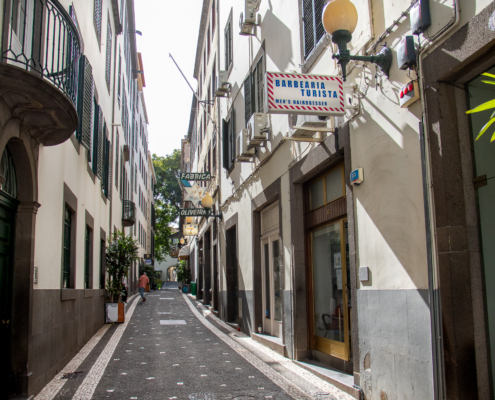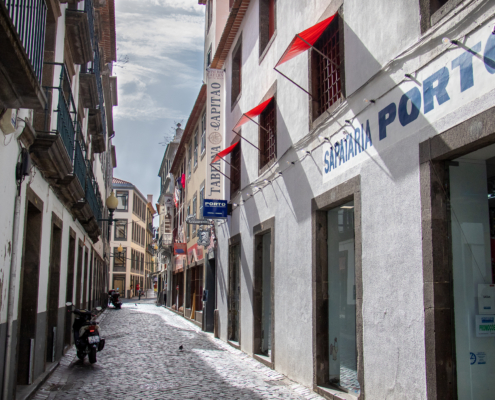Rua da Alfândega
Rua da Alfândega is one of the oldest streets in the city and crosses Funchal between Palácio de São Lourenço and Rampa do Cidrão, by the Santa Luzia stream. It runs parallel to Avenida do Mar e das Comunidades Madeirenses and Rua dos Murças and has played an important role in the city’s culture over the centuries.
Its name is due to the existence of the old Customs House of Funchal, created there in the 16th century.
It was in this street that there was an important “English Club”, founded in 1832. Which was no more than a place where between the two buildings of the Blandy family, the English sought literature. There were about two thousand titles, to quench the reading thirst of English travellers or people who lived here, with very restricted access and a six-monthly fee of $15.
Playing cards and billiards were also activities that the club had to offer, sought after by those who wanted to know the “latest” news from the English newspapers.
This street was for many years the head office of the Diário de Notícias da Madeira, today based in Rua Dr Fernão de Ornelas, having been throughout time a favourite place for furniture shops, being a street that many walked through.
On this street we find one of the shops with history, the Tourist Barber Shop, that deserves your visit.
The street, which intersects with Rua António José de Almeida, Rua dos Capelistas, Rua do Sabão, Rua do Esmeraldo and Rua dos Tanoeiros, extends behind the city gates, in Largo dos Varadouros and ends at Rampa do Cidrão, where there is a fountain that draws the attention of passers-by due to the beauty of its construction. Built in 1903, it is part of Funchal’s historical legacy and was recently restored by Funchal City Hall.
For several centuries, on the stretch between Rua António José de Almeida and Rua dos Capelistas is a magnificent building that marked its 500th anniversary in December 2019, where operated the Customs House of Funchal, and is currently the headquarters of the Legislative Assembly of the Autonomous Region of Madeira, the first self-government body of the Region. Annexed to this building, is one of the most important monuments of the city, the Chapel of Santo António.







